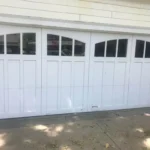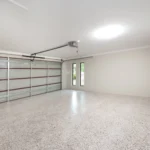Replacing a garage door opener is often necessary when your current one malfunctions, becomes outdated, or no longer meets your needs. This guide will walk you through the process of installing a new garage door opener, ensuring smooth operation and enhanced security for your home.
Content
Assessing the Need for Replacement
Before diving into the installation process, it’s essential to determine whether your garage door opener truly needs replacement. Common signs include:
- Malfunctioning: Persistent issues such as failure to open or close properly.
- Outdated Technology: Older models lacking modern safety features or smart capabilities.
- Excessive Noise: Noisy operation indicating worn-out components.
Choosing the Right Garage Door Opener
Selecting the appropriate garage door opener involves considering factors like door size, weight, and desired features such as quiet operation or smartphone connectivity. Consult with a professional like Integrity Garage Door Repair in Poquoson, VA, for personalized recommendations.
Steps for DIY Garage Door Opener Replacement
- Gather Necessary Tools: Before starting, gather tools such as a screwdriver, wrench set, ladder, and the new garage door opener kit.
- Prepare the Area: Clear out the garage space for easy access to the opener mechanism. Ensure adequate lighting and ventilation.
- Disconnect Power: Safely disconnect power to the existing opener by unplugging it or turning off the circuit breaker.
- Remove Old Opener: Carefully uninstall the old opener, following manufacturer instructions. Disconnect all wiring and remove mounting brackets.
- Install New Opener: Follow the detailed installation guide provided with your new opener kit. Mount the opener securely, attach the rail to the header bracket, and connect wiring according to instructions.
- Adjust Settings: Adjust opener settings such as force sensitivity and travel limits to ensure smooth and safe operation.
Garage Door Opener Maintenance
To prolong the lifespan of your new opener, regular maintenance is crucial. Perform the following tasks periodically:
- Lubricate Moving Parts: Apply garage door lubricant to rollers, tracks, and hinges.
- Inspect and Tighten: Check for loose bolts and screws on the opener and door mechanism.
- Test Safety Features: Regularly test auto-reverse sensors and other safety mechanisms.
Troubleshooting Common Issues
If you encounter problems after installation, consider these troubleshooting tips:
- Check Power Supply: Ensure the opener is plugged in and the circuit breaker is not tripped.
- Inspect Remote Batteries: Replace batteries in the remote control if it fails to operate the opener.
- Sensor Alignment: Verify that the safety sensors are properly aligned and free from obstructions.
Professional Assistance
For complex installations or persistent issues, seeking help from professionals like Integrity Garage Door Repair in Poquoson, VA, ensures safety and optimal performance. Professional services offer expertise in troubleshooting and fine-tuning your garage door opener for reliable operation.
Conclusion
Replacing your garage door opener is a manageable DIY project with the right tools and guidance. By following these steps and safety precautions, you can upgrade your garage’s functionality and security. For personalized advice or professional installation services, contact Integrity Garage Door Repair in Poquoson, VA, to ensure your garage door opener operates smoothly and efficiently for years to come.

Max isn’t your ordinary auto blogger. He’s your friendly neighborhood gearhead, here to guide you through the automotive maze. His blog is like a conversation with a buddy who’s always got the latest auto scoop.












